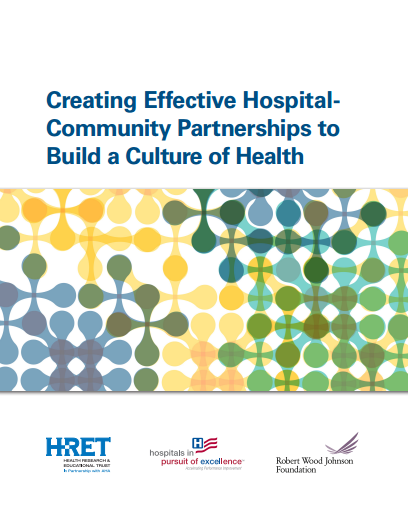PRAXIS Resource of the Month: The Power of Partnerships
Posted on August 08, 2016 |

This post was written by Kristen Willard, M.S.
One of the themes common to those most successful in COPD care delivery is the development and nurturing of community partnerships. Healthcare organizations heighten their impact and extend their reach when they work closely with fellow healthcare organizations, faith-based groups, transportation companies, businesses and other invested stakeholders.
In COPD care delivery, these coalitions can take a variety of forms. For example:
- A doctor’s office working with a local transportation company to provide discounted taxi services to help patients with transportation access issues to get to their appointments;
- A local YMCA providing access to their exercise equipment during low-traffic hours to respiratory therapy & pulmonology staff to create a pulmonary rehabilitation program;
- Local health departments providing free access to health fair space to promote a health system’s respiratory care offerings and provide on-site peak flow screenings;
- Churches providing meeting hall space to host COPD support groups in a location convenient to their members.
All of these partnerships share the commonality of being relationships that benefit both parties and, most importantly, promote the health of the most important stakeholders — the patient with COPD.
In 2016, the Health Research & Educational Trust (HRET), with support from the Robert Wood Johnson Foundation (RWJF), published a toolkit titled, “Creating Effective Hospital-Community Partnerships to Build a Culture of Health.” While the toolkit is intended for hospitals, PRAXIS members working in other environments should not be deterred from downloading and exploring this free resource; the included principles and guidance are applicable to a variety of settings.
The data for this 72-page guide was extracted from interviews the authors conducted with 50 hospital and community partner leaders. They surmise that several elements are essential to long-standing, productive partnerships, including:
- The creation of a shared vision and objectives based upon data provided via community needs assessment.
- Involvement of all parties in the planning, implementation and evaluation of not only the intervention or event resulting from the alliance, but the partnership itself.
- Active engagement by all parties. The most beneficial partnerships are those in which organizations are involved well beyond name or service provision only.
- Roles and expectations are clearly outlined from the initiation of the relationship. Communication, whether relaxed or more formal, is clear and regular and is established between all stakeholders, including the patient community they serve.
The authors describe commonly reported challenges in partnership development and approaches to successful resolution (e.g., the issue of limited funding sources: address by building partnerships with other like-minded partners with complementary resources). They also provide a clear and concise framework for creating the partnership, one that can be used as a checklist in all phases of work (see pages 31-32).
In a robust case studies section, HRET includes the work of seven different hospitals in a variety of locales and describes their partnerships with local coalitions, nonprofit organizations with similar missions, food banks, school systems and health systems and centers. While these examples represent different care delivery or population health arenas, the approaches are transferable to our work. Each vignette includes background on the partnership, the needs of the community and the structure of the pairings; information about the community partners engaged in the model; results of their work; lessons learned (e.g., a memorandum of understanding was helpful; there is a need for multiple groups to examine root causes and potential solutions to address community needs comprehensively); and contact information (including email addresses) for the involved partners.
Last, the appendices contain helpful resources including information from two partnership effectiveness surveys, one employed by Cook County, IL and the other Duke Health Division of Community Health (appendices D and E), a 44-question coalition member assessment (appendix F) followed by additional resources for your consideration.
Read more about the guide and download it at the Hospitals in Pursuit of Excellence website here.
Please share in the comments:
Tell us a little bit more about your organization’s community partnerships – what has been successful for you? What hasn’t worked so well?
What resources have you found helpful in developing, maintaining and measuring the success of your community relationships?
This page was reviewed on March 3, 2020 by the COPD Foundation Content Review and Evaluation Committee